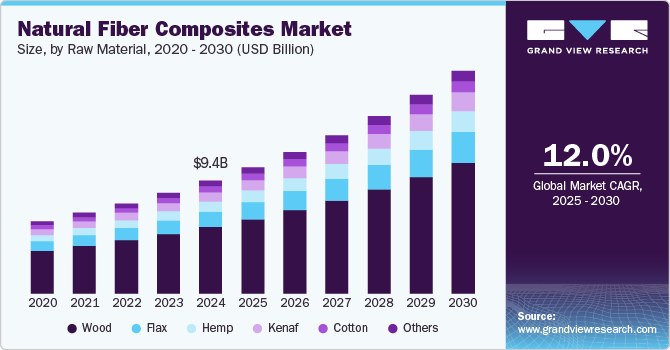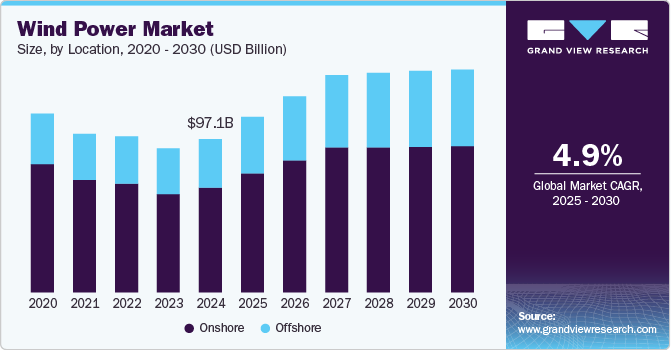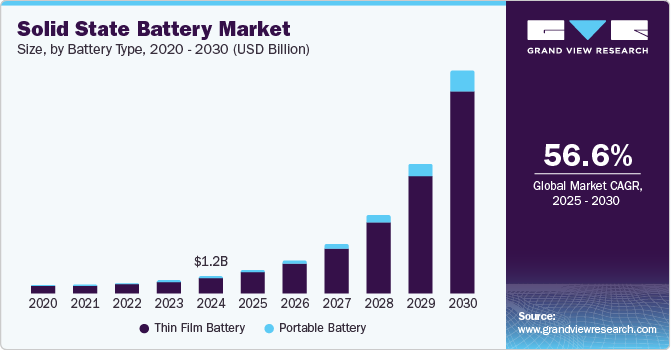Renewable Energy Market Size, Share & Trends Analysis growing at a CAGR of 14.9% from 2025 to 2033

The global renewable energy market size was estimated at USD 1.51 trillion in 2024 and is projected to reach USD 4.86 trillion by 2033, growing at a CAGR of 14.9% from 2025 to 2033. The global shift toward low-carbon energy alternatives and increasingly stringent environmental regulations across developed economies experiencing a significant growth of the renewable energy sector.
Key Market Trends & Insights
- Asia Pacific energy transition market held the largest share of 41.24% of the global market in 2024.
- The energy transition market in the U.S. is expected to grow significantly over the forecast period.
- By product, the Solar segment held the largest market share of 27.09% in 2024.
- Based on the application, the Industrial segment held the largest market share in 2024.
Market Size & Forecast
- 2024 Market Size: USD 1.51 Trillion
- 2033 Projected Market Size: USD 4.86 Trillion
- CAGR (2025-2033): 14.9%
- Asia Pacific: Largest market in 2024
Request a free sample copy or view report summary: https://www.grandviewresearch.com/industry-analysis/renewable-energy-market/request/rs1
Over the past few years, the power generation industry is witnessing a steady rise in renewable energy capacity additions, primarily driven by heightened environmental awareness and mounting pressure to curb the effects of greenhouse gas (GHG) emissions. This has led to a rapid expansion of solar and wind power projects across key markets, solidifying their role as dominant forces in the global energy mix. In the United States, renewable energy growth is underpinned by favorable government policies and an abundant supply of renewable feedstock, particularly biomass. The number of renewable power facilities has continued to climb in response to federal and state-level emission mandates.
The country’s power generation landscape is evolving, with natural gas and renewable energy sources progressively taking the place of coal-fired power generation. Furthermore, rising electricity distribution costs, recurring grid disruptions, and government-backed incentives for hydropower deployment are likely to accelerate the adoption of decentralized renewable systems. These developments are poised to drive further market demand in the coming years.
Germany remains one of the most prominent markets for renewable energy in Europe. In recent years, the country has actively invested in alternative energy technologies to reduce its dependence on fossil fuels and enhance national energy security. These investments have been instrumental in accelerating the growth of solar power generation. With the ongoing expansion of the domestic solar industry, Germany is expected to contribute significantly to regional renewable market growth throughout the forecast period.
Solar power is a sustainable and clean energy source, enabling energy independence and reducing reliance on imported fuels. It also offers multiple long-term benefits, such as flood management, clean water supply, irrigation support, and stable, low-cost electricity generation, while being more resilient than many conventional energy systems.
Drivers, Opportunities & Restraints
The global renewable energy market is primarily driven by the urgent need to reduce greenhouse gas emissions, diversify energy sources, and ensure long-term energy security. International climate accords and national net-zero commitments have led governments to implement aggressive renewable energy targets and introduce favorable policies, including feed-in tariffs, tax incentives, and green bonds. Simultaneously, declining costs of solar photovoltaic, wind turbines, and battery storage technologies have made renewable energy more economically viable. The rising demand for sustainable electricity across residential, commercial, and industrial sectors supports the large-scale deployment of renewables.
Opportunities are rapidly evolving across the renewable energy landscape. Technological innovations such as bifacial solar modules, floating wind farms, and hybrid renewable systems are unlocking new levels of efficiency and grid integration. The growing focus on decentralized energy systems, rural electrification programs, and cross-border renewable power trade expands access to clean energy in emerging markets. Corporate sustainability goals and power purchase agreements (PPAs) also significantly accelerate renewable capacity additions. However, challenges persist, for instance, the intermittent nature of renewable sources, inadequate energy storage capacity, and limited transmission infrastructure in certain regions hinder seamless adoption. Moreover, policy volatility, land acquisition hurdles, and financing risks for large-scale renewable projects remain key barriers to sustained market growth.






